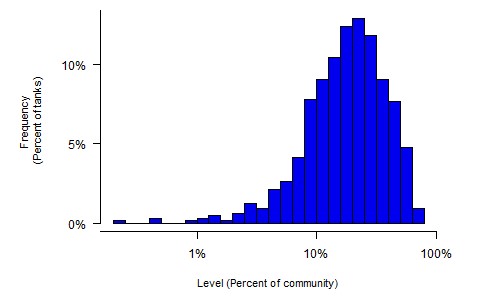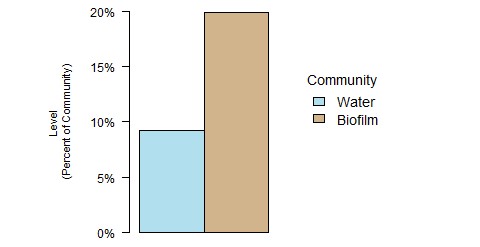The Family Rhodobacteraceae
The Rhodobacteraceae are a large, diverse family of aquatic Bacteria that are widespread throughout the marine environment. They are often the most abundant group in samples from marine habitats.
They are generally aerobic and chemoheterotrophic, although some groups can also perform photosynthesis in anaerobic conditions. Many can degrade sulfur containing compounds such as DMSP. Many used methylated amines as a primary nitrogen source.
These Bacteria play important roles in sulfur and carbon cycles in the ocean. They are often associated with animals directly, interactions that include both beneficial symbioses and diseases.
Rhodobacteraceae on coral reefs
Rhodobacteraceae are a dominant menbver of the microbiome in samples from natural coral reefs. In a study across habitats on the Great Barrier Reef, researchers found that Rhodobacteraceae were most abundant in warmer and more nutrient-rich habitats.
The abundance of this group is associated with corals on natural reefs – they’re found at higher levels in coral-dominated reefs, and lower levels in algae-dominated habitats. However growth experiments have shown that growth of this group is promoted best by algae-derived nutrients, rather than coral nutrients or low-nutrient seawater controls. Together these findings highlight the close association between Rhodobacteraceae and both corals and algae.
Pathogens in the family Rhodobacteraceae
The family Rhodobacteraceae includes numerous pathogens and suspected coral pathogens. Unfortunately because most of the diversity in this family has only been recently discovered, most of these have not been described at the species level.
The Caribbean coral disease SCTLD (Stony Coral Tissue Loss Disease) is associated with several Bacteria in the Rhodobacteraceae. White Plague Disease, White Patch Disease, and White Syndromes have also been associated with this family in numerous studies.
This is an active area of ongoing research, and we are constantly updating our list of pathogens as new studies emerge.
Rhodobacteraceae in reef tanks

Bacteria from the family Rhodobacteraceae are universally present in reef tank samples.

Bacteria from the family Rhodobacteraceae make up a large fraction of the community in reef tank samples, generally franging from 10-80% of the total.

Rhodobacteraceae are the dominant component of the biofilm community, but are also abundant in water samples.
Read more
Wikipedia: Rhodobacteraceae
OBIS: Rhodobacteraceae
Adjusting your Rhodobacteraceae levels
-
Increasing your levels
-
Increase nutrients by increasing feeding or decreasing export
-
Actually, very few tanks are deficient in Rhodobacteraceae.
-
Decreasing your levels
-
Deep cleaning of sediment and sump to reduce detritus levels
-
Increase nutrient export and water changes to reduce nutrient levels
Testing your tank for Rhodobacteraceae
Our standard Microbiome Test includes information on the levels of Rhodobacteraceae in your tank. This family includes some of the most common coral pathogens in the hobby, so its worth checking.
Rhodobacteraceae are surely growing in your tank, but what kind? Test your tank today and find out!
